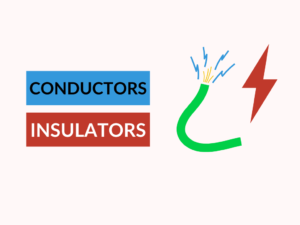Difference Between Conductor and Semiconductor
What is/are conductor?
A conductor is a material that allows the flow of electric current through it with ease. It has a high conductivity, which means it has a large number of free electrons that can move freely when an electric field is applied.
Examples of conductor:
- Copper
- Aluminum
- Gold
- Silver
Uses of conductor:
Conductors are extensively used in electrical and electronic systems for various purposes:
- Wiring in buildings and houses
- Electric power transmission
- Electrical appliances and devices
What is/are semiconductor?
A semiconductor is a material that has properties between those of a conductor and an insulator. It can conduct electricity under certain conditions, but not as efficiently as conductors. The conductivity of semiconductors can be modified by adding impurities.
Examples of semiconductor:
- Silicon
- Germanium
- Gallium arsenide
Uses of semiconductor:
Semiconductors are widely used in various electronic devices due to their ability to control and manipulate electrical signals and current flow. Some common uses include:
- Integrated circuits (ICs) and microchips
- Transistors
- Solar cells
- Light-emitting diodes (LEDs)
Differences between conductor and semiconductor:
| Difference Area | Conductor | Semiconductor |
|---|---|---|
| 1. Electrical conductivity | High conductivity | Moderate conductivity |
| 2. Temperature dependency | Conductivity remains constant with temperature | Conductivity decreases with increasing temperature |
| 3. Energy band gap | No energy band gap | Small energy band gap |
| 4. Impurity doping | Not required | Required for controlling conductivity |
| 5. Electron flow | Free electrons flow freely | Electrons flow only when energy is supplied |
| 6. Thermal conductivity | High thermal conductivity | Moderate thermal conductivity |
| 7. Resistivity | Low resistivity | Higher resistivity compared to conductors |
| 8. Voltage drop | Low voltage drop | Higher voltage drop compared to conductors |
| 9. Majority carriers | Free electrons | Holes or electrons depending on the type of semiconductor |
| 10. Applications | Power transmission, electrical wiring | Computers, solar cells, electronic devices |
Conclusion:
In summary, conductors allow easy flow of electric current with high conductivity, while semiconductors have moderate conductivity and can control current flow through impurity doping. Conductors have no energy band gap, while semiconductors have a small energy band gap. Conductors have free electron flow, while the flow of electrons in semiconductors depends on energy supply. Conductors have high thermal conductivity and low resistivity, while semiconductors have moderate thermal conductivity and higher resistivity. Conductors are primarily used in power transmission and wiring, while semiconductors find applications in computers, solar cells, and electronic devices.
People Also Ask:
1. What is the main difference between conductors and semiconductors?
The main difference is their conductivity. Conductors have high conductivity, allowing easy flow of electric current, while semiconductors have moderate conductivity, allowing controlled current flow.
2. How do conductors and semiconductors differ in terms of temperature dependency?
Conductivity of conductors remains constant with temperature, while the conductivity of semiconductors decreases with increasing temperature.
3. Do semiconductors require impurity doping?
Yes, impurity doping is required in semiconductors to control their conductivity.
4. What are the majority carriers in conductors and semiconductors?
In conductors, the majority carriers are free electrons. In semiconductors, it can be either holes or electrons depending on the type of semiconductor.
5. What are the typical applications of conductors and semiconductors?
Conductors are primarily used in power transmission and electrical wiring, while semiconductors find applications in computers, solar cells, and various electronic devices.


